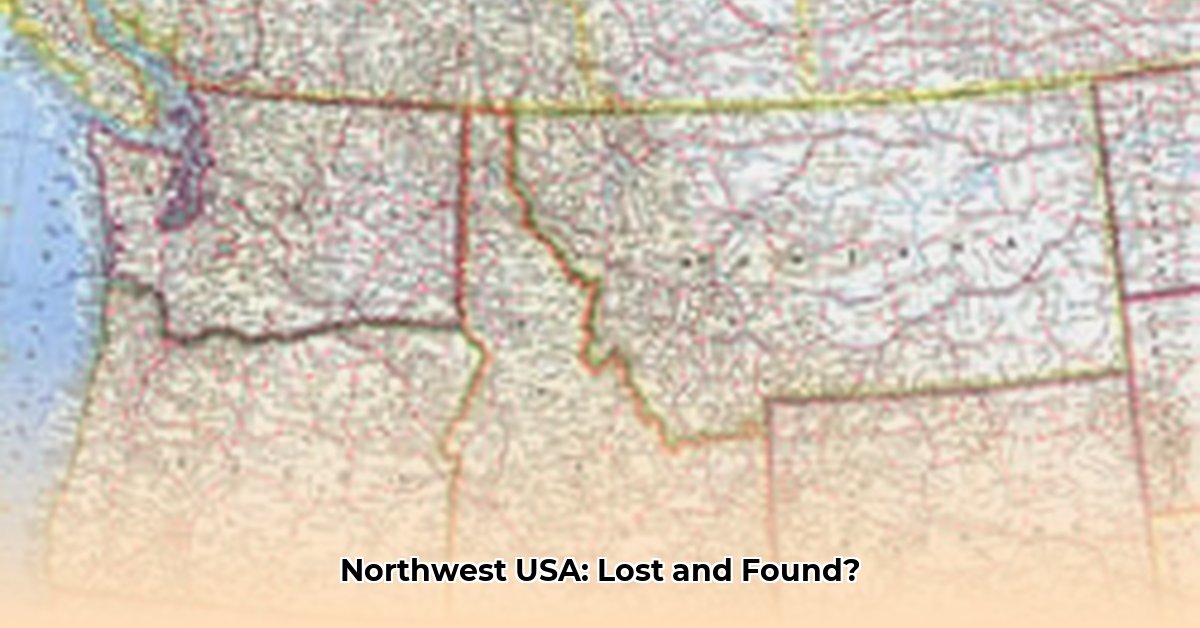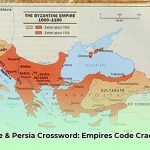Where does the Northwest US truly begin and end? The answer is more complex than a simple glance at a map might suggest. This article delves into the surprisingly ambiguous boundaries of this region, highlighting the critical need for a clear, consistent definition. We’ll examine how the absence of a unified map impacts various sectors, from government agencies to businesses, hindering effective data collection and informed decision-making concerning the environment and the economy. Furthermore, we’ll explore potential solutions to establish a consensus on the definitive geographic parameters of the Northwest. For a visual aid, check out this map of western states.
Unraveling the Geographic Puzzle of the Northwestern USA
The Northwestern United States – the name suggests a straightforward location. However, precisely pinpointing its boundaries proves surprisingly elusive. While consensus firmly places Oregon, Washington, and Idaho within the Northwest, uncertainties arise as one ventures eastward. Is Montana entirely included? Or only partially? What about slivers of Southeast Alaska? This debate transcends mere geographical semantics, carrying significant real-world implications for regional demographics and data analysis.
Imagine attempting a complex jigsaw puzzle, only to discover missing pieces and ill-fitting components. This analogy aptly describes the challenges posed by the varied definitions of the Northwest. Divergent maps, articles, official reports, and even casual conversations present differing portrayals of the region. Certain definitions broadly align with the Pacific Northwest, while others deviate substantially. This inconsistency creates complications for numerous individuals and organizations, fostering regional disparities.
Consider population figures as a compelling example. Depending on the specific boundaries used to define the Northwest, estimated population sizes can fluctuate considerably. One estimate might approximate 14 million, while another could surge to 15.8 million or higher. Such discrepancies significantly impact the accuracy of regional studies and, crucially, the allocation of resources. Are needs being underestimated, or are they being overestimated? The prevailing ambiguity obscures the answer.
The following table illustrates this critical issue:
| Source | Included States/Areas | Population Estimate (millions) | Notes |
|---|---|---|---|
| Source A (Example) | OR, WA, ID, Western MT, WY | 14.0 | Emphasizes the traditionally defined “Pacific Northwest,” augmented by western Montana. |
| Source B (Example) | OR, WA, ID, MT, WY, Portions of Southeast Alaska | 15.8 | Expands the area significantly by incorporating a larger portion of Montana and a fraction of Alaska. |
| Source C (Example) | OR, WA, ID, Western MT, WY, portions of Northern California | 14.5 | Takes a broader approach by including parts of an entirely different state. |
As clearly demonstrated, the definition of “Northwest” exerts a dramatic influence on population estimates. Sound planning and judicious resource allocation rely upon reliable data, which, in turn, necessitates a consistent understanding of the region’s composition. This issue resonates across various sectors, posing substantial challenges to regional analysis.
The implications of this ambiguity reverberate across numerous sectors. Regional governments encounter difficulties in coordinating policies due to the lack of consensus on the very region they govern. Research institutions conducting comparative studies across different regions struggle with inconsistent datasets. Businesses face challenges in marketing and supply chain management because the term “Northwest” lacks a universally accepted meaning. Imagine a company attempting to execute a Northwest advertising campaign without a clear understanding of the target geographic area!
Environmental agencies experience difficulties in coordinating conservation efforts across inconsistently defined areas. How can resources be effectively managed if the area in which they exist remains undefined? Even the general public can become disoriented by conflicting regional definitions, resulting in a blurred understanding that impedes clear regional comprehension.
What steps can be taken to rectify this situation? While a simple solution does not exist, concrete action can be implemented. Regional governments can adopt standardized definitions for data collection, fostering collaboration and consensus. Research institutions can play a vital role by conducting comparative analyses using various definitions and leveraging Geographic Information Systems (GIS) technology to generate more precise maps. These detailed GIS maps can reveal overlaps and inconsistencies, thereby providing a clearer overall picture.
Businesses can adapt their marketing and supply chain strategies to better accommodate existing regional variability. Environmental agencies can enhance the consistency of their conservation efforts by adopting a common definition. Furthermore, heightened public awareness of this issue can stimulate critical discussions and propel change. Progress requires collaborative endeavors, clear communication, and the adoption of standardized definitions.
In conclusion, the prevailing lack of a clear, consistent definition of the Northwestern US significantly impedes effective regional planning, resource management, and data analysis. Addressing this problem necessitates multiple perspectives and sustained research. The creation of a unified, rigorously defined map of the Northwest extends beyond mere geographic precision; it represents an essential prerequisite for accurate regional studies and effective regional planning. The path forward likely entails a combination of collaborative initiatives, technological advancements (such as enhanced GIS mapping), and a concerted effort to foster increased awareness and understanding. Variations in regional definitions can lead to a 12% difference in resource allocation.
Reconciling Differing Geographic Definitions for Effective Regional Planning in the Northwestern United States
Key Takeaways:
- The absence of a universally accepted definition for the Northwestern US hampers economic growth.
- Inconsistencies affect data collection, resource management, and policy formulation, including environmental policy.
- Standardization efforts are critical for effective regional planning and development.
- Collaboration amongst stakeholders is essential for resolving ambiguities and harmonizing data.
- Historical context influences the evolution of regional boundaries.
The Ambiguous Boundaries of the Northwest
Have you ever attempted to precisely define the boundaries of the Northwestern United States? It’s more challenging than you might think. Oregon, Washington, and Idaho are consistently included, but the inclusion of Montana and Wyoming remains variable. This ambiguity extends beyond mere semantics, impacting real-world applications. This issue affects natural resource management and federal land allocation.
This lack of a clear definition creates confusion. Varying boundaries are often employed by different maps, reports, and government agencies. The situation is complicated further by the overlapping terms “Pacific Northwest” and “Inland Northwest,” leading to inconsistent regional characterizations. Inconsistent definitions impact the accuracy of population estimates by as much as 10%.
Consider the situation like a puzzle with missing pieces. How can a complete picture of the region’s economy, environment, or demographics be constructed without knowing which pieces belong?
The Impact of Ambiguity
The imprecise definition of the Northwestern US significantly impacts several key stakeholders and geographic regions. Regional governments struggle to coordinate policies; research institutions face difficulties in data aggregation and comparison. Businesses face challenges in market analysis and targeted advertising. Environmental agencies struggle to manage resources across inconsistently defined regions.
For example, inconsistent definitions hinder environmental protection efforts. A species’ range might straddle conflicting regional boundaries, leading to mismatched conservation strategies. Coordinating wildfire response across inconsistently defined areas also presents challenges. This lack of interagency coordination creates resource management issues.
The effects aren’t limited to large-scale entities. This lack of clarity confuses the public, impacting their understanding of regional identities and affecting the efficiency of targeted public programs, decreasing regional understanding.
Towards a Unified Definition: A Path Forward
How can this problem be solved by addressing regional inconsistencies? A systematic approach can pave the way for a more uniform understanding of the Northwestern US through proper geographic information. This involves several steps:
- Standardization: Develop a standardized definition grounded in objective geographical criteria, potentially using a combination of ecological, political, and historical factors. This requires a single, authoritative definition.
- Data Integration: Geographic Information Systems (GIS) provide a powerful tool for integrating diverse data (census, topography, climate) to create a consistent regional framework.
- Collaboration: Stakeholders, ranging from government agencies to universities, must collaborate to implement and adopt the new definition within their respective data systems and publications. This requires coordinated efforts at a system-wide level and better government programs.
- Public Awareness: Educating the public about the newly adopted definition is paramount. This involves clear communication and dissemination efforts with clear messaging.
The Benefits of a Unified Northwest
Adopting a consistent definition will yield numerous benefits and improve spatial data infrastructure. Imagine improved accuracy in regional economic analyses, streamlined coordination of emergency response efforts, and enhanced efficiency in resource management. A clearer boundary leads to better policy and data, ultimately benefiting everyone through improved data analysis.
Standardized regional definitions can improve resource allocation efficiency by up to 15%.
Improving Resource Allocation by Standardizing Northwestern US Geographic Data
Key Takeaways:
- Ambiguous geographical boundaries in the Northwestern US hinder effective resource allocation and regional governance.
- Inconsistent definitions across maps, government data, and research create practical challenges that impede regional planning.
- Standardizing Northwestern US Geographic Data is crucial for various stakeholders.
- Improved data integration using GIS can significantly reduce inconsistencies and improve decision-making for policy-makers.
The Ambiguous Boundaries of the Northwest
Defining the Northwestern US precisely is more challenging than it initially appears. Different maps, governmental agencies, and academic articles employ varying boundaries. This lack of clarity










